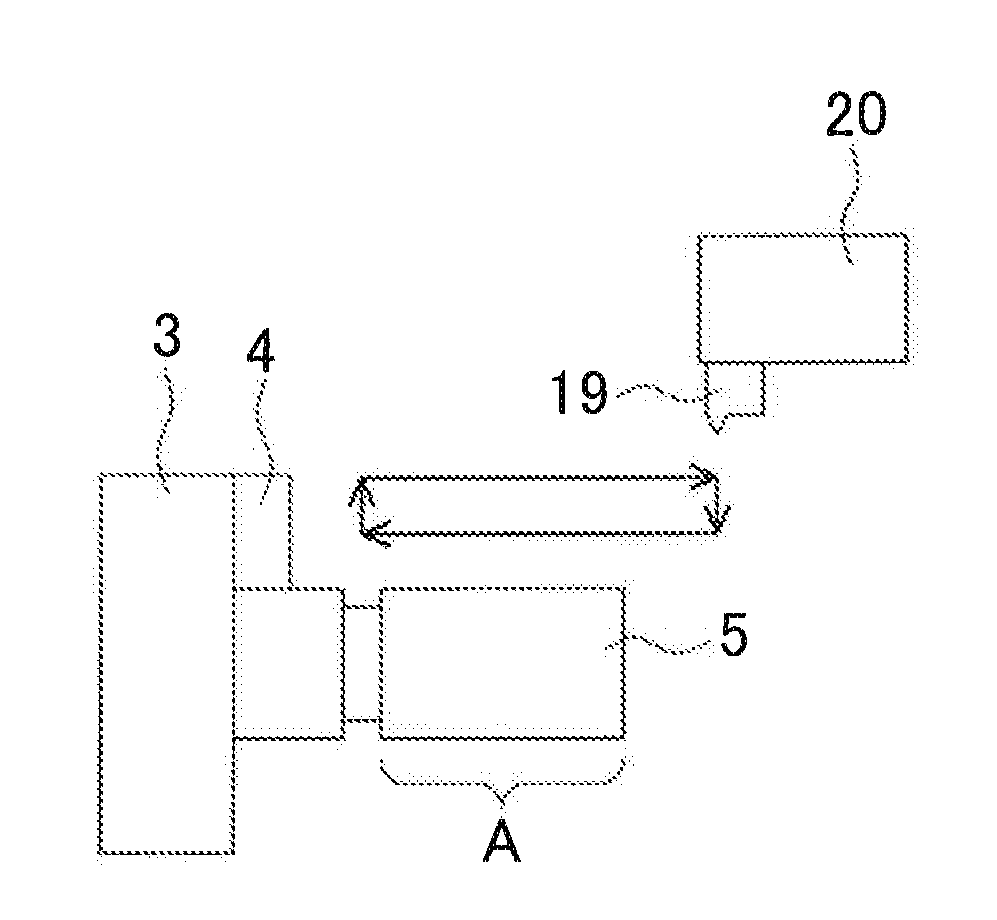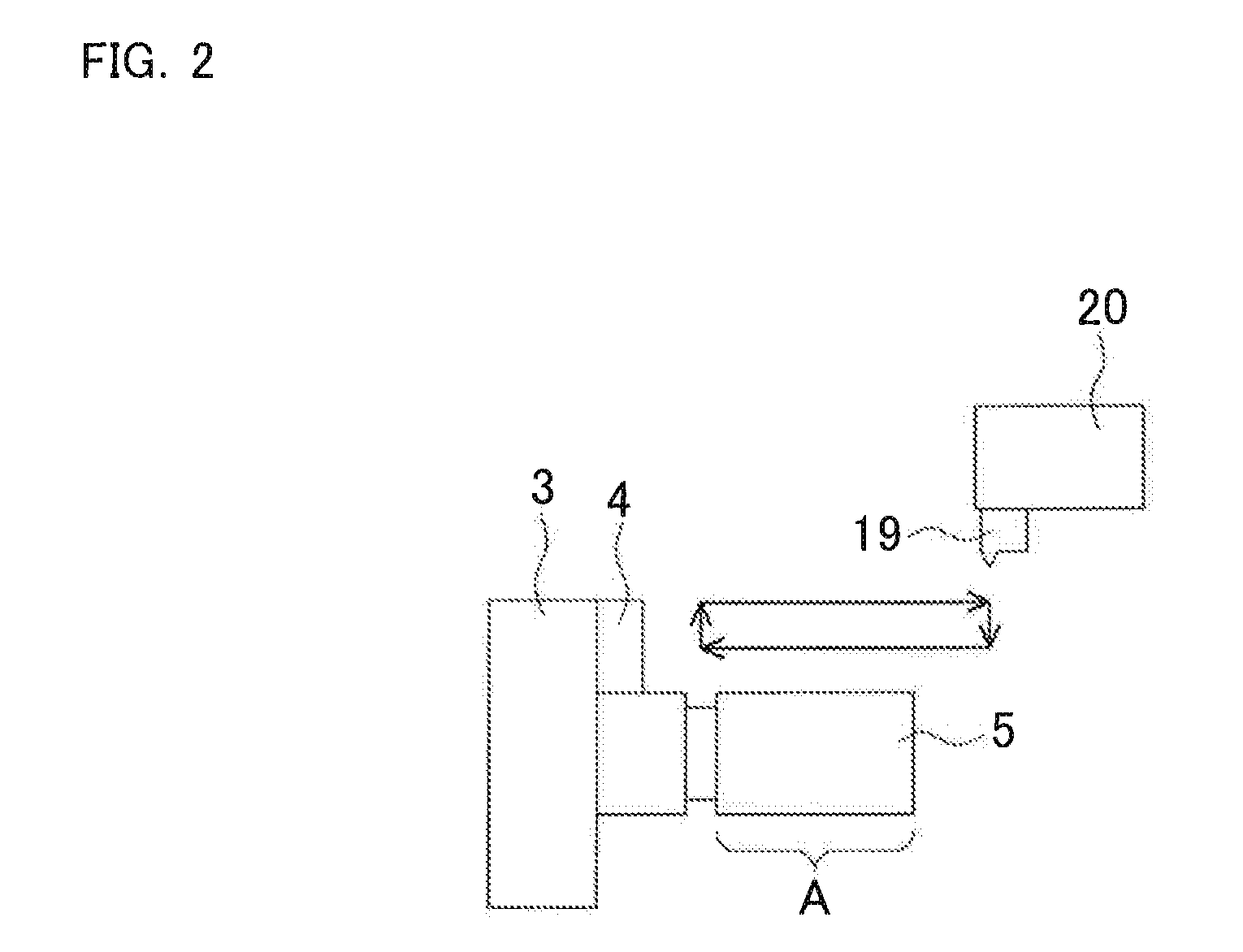Machine tool
a technology of machine tools and tools, applied in the field of machine tools, can solve the problems of affecting the operation of the machine, so as to facilitate the suppression of chatter vibrations, prevent problems, and facilitate the operation of the main spindle rotation speed of the first cutting at the start of machining
- Summary
- Abstract
- Description
- Claims
- Application Information
AI Technical Summary
Benefits of technology
Problems solved by technology
Method used
Image
Examples
Embodiment Construction
[0019]A machine tool according to an embodiment of the present invention will be described in detail with reference to the accompanying drawings.
[0020]First, the overall configuration of a lathe 1 will be described with reference to FIG. 1. The lathe 1 includes a chuck 3 having a pawl 4 at the distal end of a main spindle 2, and is capable of holding a shaft-shaped workpiece 5 by the chuck 3. A motor 7 that rotates the main spindle 2 and an encoder 6 that detects the rotation speed of the main spindle 2 are contained in a headstock 8 that supports the main spindle 2 such that the main spindle 2 rotates.
[0021]A main spindle control section 9 monitors the rotation speed of the main spindle 2 by the encoder 6 and controls the rotation speed of the main spindle 2. A lathe control section 10 controls the overall behavior of the lathe 1, and is connected to the main spindle control section 9, an input unit 11, a storage section 12, a rotation-speed computing section (hereinafter referred ...
PUM
| Property | Measurement | Unit |
|---|---|---|
| regenerative width | aaaaa | aaaaa |
| width | aaaaa | aaaaa |
| rotation speed | aaaaa | aaaaa |
Abstract
Description
Claims
Application Information
 Login to View More
Login to View More - R&D
- Intellectual Property
- Life Sciences
- Materials
- Tech Scout
- Unparalleled Data Quality
- Higher Quality Content
- 60% Fewer Hallucinations
Browse by: Latest US Patents, China's latest patents, Technical Efficacy Thesaurus, Application Domain, Technology Topic, Popular Technical Reports.
© 2025 PatSnap. All rights reserved.Legal|Privacy policy|Modern Slavery Act Transparency Statement|Sitemap|About US| Contact US: help@patsnap.com



